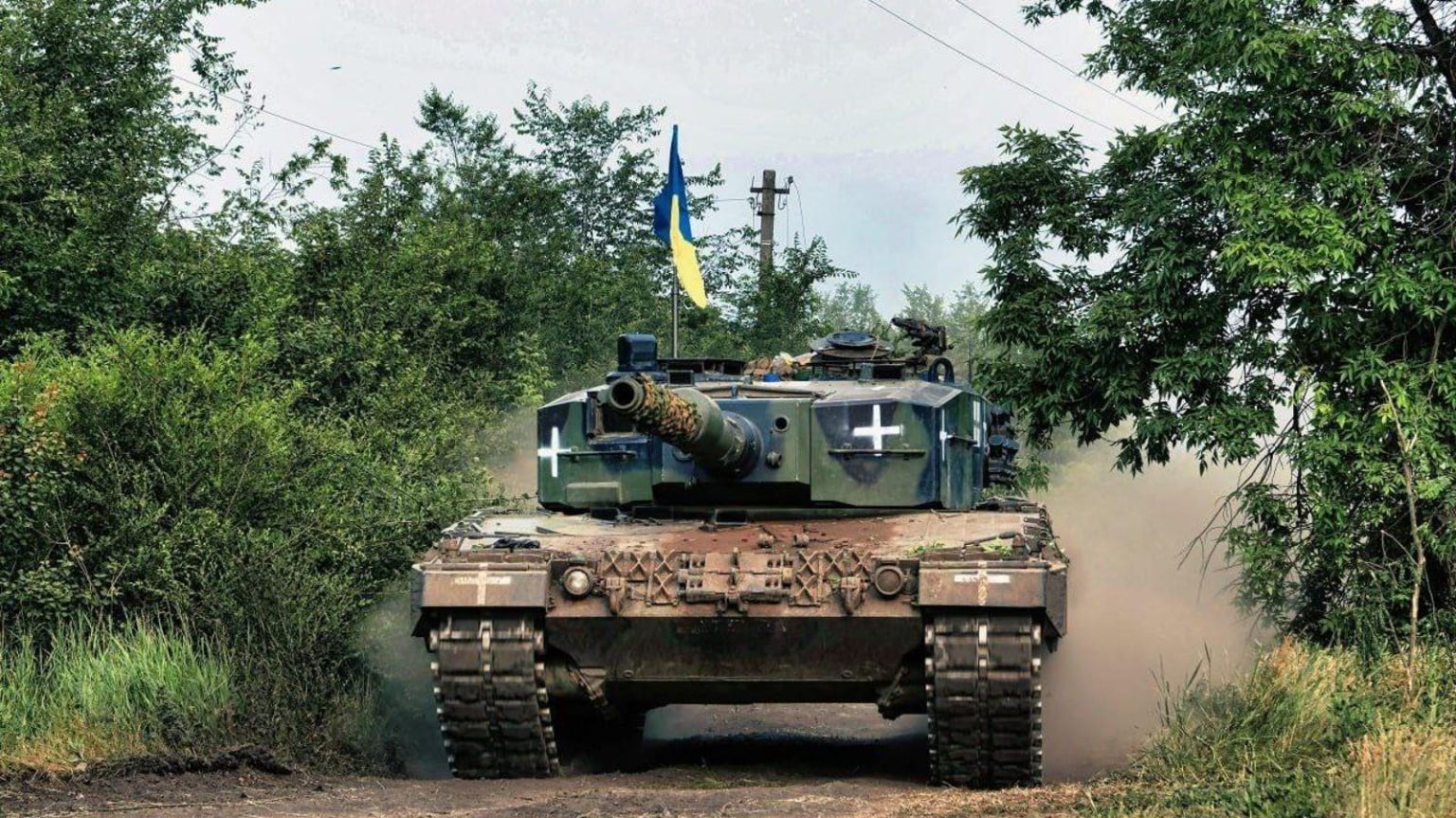It seems Russian forces have knocked out another two Ukrainian Leopard 2 tanks. If so, they would be the fourth and fifth Leopard 2 loss in just a week or so along a single sector of the 600-mile front line of Russia’s wider war on Ukraine.
The apparent recent Leopard 2 losses all happened in southern Ukraine’s Zaporizhzhia Oblast, where the Ukrainian army’s 33rd Mechanized Brigade—the sole user of the initial 40 69-ton Leopard 2A4s Ukraine got from its European allies this spring—lately has assumed a lead role, replacing the exhausted 47th Mechanized Brigade four months into Ukraine’s southern counteroffensive.
“The enemy’s losses in that direction totaled as many as 85 personnel, three tanks including two Leopards, four armored combat vehicles and two motor vehicles,” the Kremlin told state media Thursday.
The Russian defense ministry frequently lies about Ukrainian losses, so be skeptical. But also note: there’s video seemingly depicting at least one of the recent strikes on a Leopard 2.
A spike in Ukrainian Leopard 2 losses isn’t unexpected. As the 33rd Brigade shifts into closer daily contact with Russian regiments along the axis between Verbove and Melitopol in Russian-occupied Zaporizhzhia, its Leopard 2 battalion—normally equipped with at least 30 active tanks—is exposed to more mines, artillery barrages and, most critically, explosives-laden first-person-view drones.
Drones seem to be responsible for most of the five recent Leopard 2A4 kills. A surge in Russian drone ops might be the other big factor in the 33rd Brigade’s escalating losses. There are more and more FPV drones over Zaporizhzhia.
A two-pound FPV drone clutching a one-pound grenade isn’t a terribly powerful anti-tank weapon, explained Samuel Bendett, a senior non-resident associate with the Europe, Russia and Eurasia program at the Center for Strategic and International Studies in Washington, D.C.
“An FPV is not always better than other weapons since not every FPV hit results in an actual kill,” Bendett said. “Sometimes it takes multiple FPV drone strikes to destroy a target as large and well protected as a tank, while a powerful anti-tank [missile] can finish the job with a single hit.”
But FPV drones often attack in swarms. The first strike damages the tank, perhaps immobilizing it. The follow-on attacks incrementally wreck the tank.
It should go without saying that the more drones an army has, the more drones it can afford to deploy against a single vehicle. In a year of determined effort, the Kremlin massively has expanded domestic production of small drones while also training up a corps of skilled drone operators.
Once the industrial and personnel infrastructure is in place, it’s easy for a military to scale up an FPV drone force. “FPVs are ubiquitous because of their cheap cost—around $400-500 per drone—and both sides in the Ukraine war are supplying many thousands of them per month,” Bendett said. “So we are seeing a drone saturation on the battlefield.”
What’s happening now, over Zaporizhzhia, was all but inevitable once Moscow got serious about deploying FPV drones. Inescapable Russian drones make it extremely dangerous for a Ukrainian tank crew to break cover and travel across fields or along roads, especially in daytime: a brutal reality the 33rd Mechanized Brigade’s tankers surely appreciate.
To be clear, Ukraine isn’t about to run out of Western-made tanks. The recent spike in tank losses belies Ukraine’s overall success in preserving its Western tanks, which so far include 40 German-made Leopard 2A4s and 21 Leopard 2A6s, a few dozen Leopard 1A5s, 10 Strv 122s from Sweden, 14 Challenger 2s from the United Kingdom and 31 American-made M-1A1s. Additional Leopard 1s and Leopard 2s are scheduled for delivery.
In four months of hard fighting, the Ukrainians have lost seven Leopard 2A4s, three Leopard 2A6s and a single Challenger 2. Eleven Western tanks out of 150 or so that Kyiv’s allies have delivered.
Meanwhile, damaged tanks don’t tend to stay damaged. “Although some have been lost, the recovery rate has been excellent, with damaged tanks rapidly repaired and put back into service,” noted Nicholas Drummond, a British tank consultant.
But the rate of loss indisputably is getting a lot worse for Ukraine. To sustain their best tanks through the next year of the wider war, the Ukrainians must do a better job of protecting them from small drones.
That might mean three things: deploying more mobile air-defense guns including the best German-made Gepards, doubling down on radio jammers that can interfere with drones’ control signals and targeting drone units before they can launch their lethal little flying machine.
“Both sides are trying to adapt as quickly as possible to the ever-growing threat of FPV drones,” Bendett said.
But drone operators themselves are adapting to that adaptation. The first generation of tank-killing FPV drones mostly includes models weighing just a few pounds, with payloads of around half their unloaded weight.
Now the drones are getting bigger and carrying payloads of up to 10 pounds. Ten pounds of explosives can inflict a lot more damage than one pound of explosives can do.
Read the full article here





